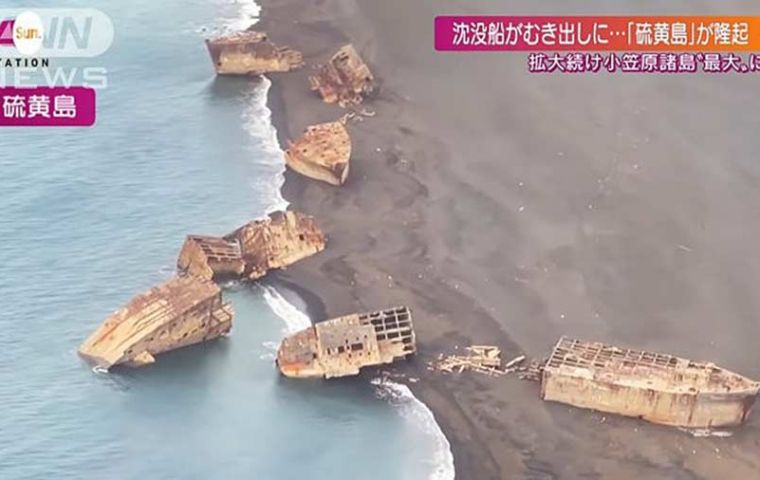MercoPress. South Atlantic News Agency
WWII sunken ships resurface in Japan
 The battle of Iwo Jima was one of the bloodiest in WWII
The battle of Iwo Jima was one of the bloodiest in WWII World War II ships that sank near the Ogasawara Islands have resurfaced due to seismic activity in the region, it was reported.
The island of Iwo Jima, where one of the bloodiest battles took place, has risen above sea level as a result of submarine eruptions that have been recorded over the past few weeks, bringing up ships sunk over 75 years ago.
Apparently the ships were sunk while trying to build a port on the island, although other reports claimed the units were Japanese ships sunk by the Americans.
Japan is made up of 6,852 islands and both volcanic and seismic activity is permanent, with a long history of earthquakes and tsunamis. It is estimated that on land and underwater there are about 110 active volcanoes.
The coast of Iwo Jima, where the ships emerged, is 1,200 kilometers from Honshu, Japan's main island, where the cities of Tokyo, Osaka and Hiroshima are located. Recent eruptions have even caused a new island to form last August.
Other reports claimed to be sure these were in fact Japanese ships sunk during the battle of Iwo Jima in 1945. Satellite images have shown the ghostly remains of the 24 transport vessels washed up on the shore.
The pictures were obtained by All Nippon News following a rise in the seabed due to activity from Mount Suribachi in the west of Iwo Jima island.
The boats are sitting on a layer of volcanic ash and experts say the tremors from Mount Suribachi could indicate a forthcoming eruption.
The black beach on Iwo To, formerly known as Iwo Jima, was stormed by the US in 1945.
Setsuya Nakada of the Volcano Research Promotion Centre, said “the discolored sea area has spread to surrounding areas, which indicates that volcanic activity has not diminished yet” and that “there is a possibility of a big eruption on Iwo Jima.”
During the war, the Japanese moved the transport vessels to form a breakwater – protecting the harbour from waves – in order to shield other boats unloading troops or weapons.
The battle of Iwo Jima resulted in some 21,000 Japanese soldiers killed and only 216 taken prisoner.




Top Comments
Disclaimer & comment rulesCommenting for this story is now closed.
If you have a Facebook account, become a fan and comment on our Facebook Page!